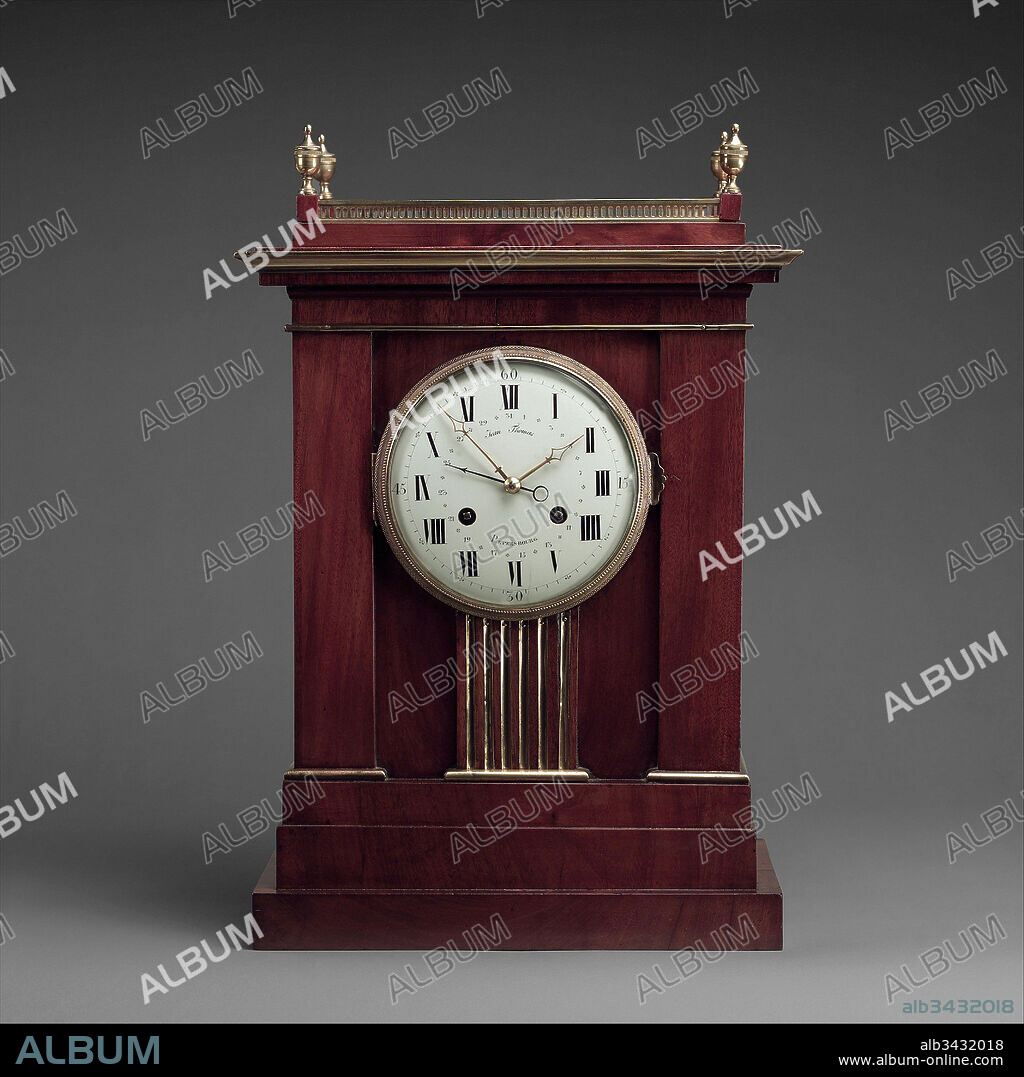alb3432018
Clock, Workshop of David Roentgen (German, Herrnhaag 1743–1807 Wiesbaden, master 1780), Movement attributed to Elie Prudhomme (German, born Switzerland, first mentioned 1776), ca. 1780–90, German, Neuwied am Rhein, Oak, pine, and mahogany, veneered with mahogany; brass, gilt bronze and enamel, Overall: 18 1/4 × 12 1/2 × 8 1/4 in. (46.4 × 31.8 × 21 cm), Horology, Workshop of David Roentgen (German, Herrnhaag 1743–1807 Wiesbaden, master 1780, Movement attributed to Elie Prudhomme (German, born Switzerland, first mentioned 1776), Its severe architectural form and restrained detailing make the case of this clock as imposing as a classical building or monument. Very much in the Roentgen style is the use of finely grained mahogany veneer, applied in a single sheet from the frieze at top down to the base, combined with brass inlay and gilt-bronze mounts.

|
Añadir a otro lightbox |
|
Añadir a otro lightbox |



¿Ya tienes cuenta? Iniciar sesión
¿No tienes cuenta? Regístrate
Compra esta imagen.
Selecciona el uso:

Descripción:
Ver traducción automática
Clock, Workshop of David Roentgen (German, Herrnhaag 1743–1807 Wiesbaden, master 1780), Movement attributed to Elie Prudhomme (German, born Switzerland, first mentioned 1776), ca. 1780–90, German, Neuwied am Rhein, Oak, pine, and mahogany, veneered with mahogany; brass, gilt bronze and enamel, Overall: 18 1/4 × 12 1/2 × 8 1/4 in. (46.4 × 31.8 × 21 cm), Horology, Workshop of David Roentgen (German, Herrnhaag 1743–1807 Wiesbaden, master 1780, Movement attributed to Elie Prudhomme (German, born Switzerland, first mentioned 1776), Its severe architectural form and restrained detailing make the case of this clock as imposing as a classical building or monument. Very much in the Roentgen style is the use of finely grained mahogany veneer, applied in a single sheet from the frieze at top down to the base, combined with brass inlay and gilt-bronze mounts
Personas:
Crédito:
Album / quintlox
Autorizaciones:
Tamaño imagen:
4266 x 4266 px | 52.1 MB
Tamaño impresión:
36.1 x 36.1 cm | 14.2 x 14.2 in (300 dpi)
 Pinterest
Pinterest Twitter
Twitter Facebook
Facebook Copiar enlace
Copiar enlace Email
Email
